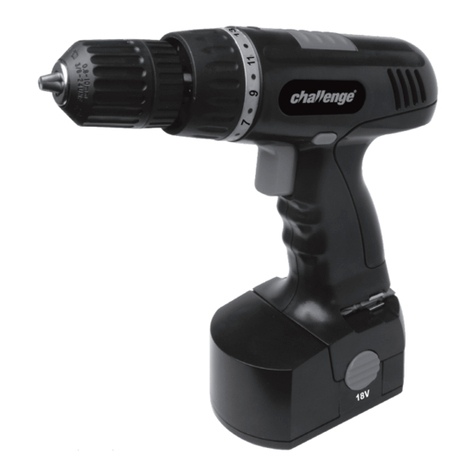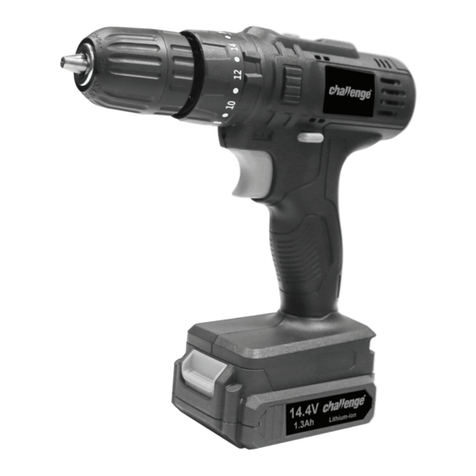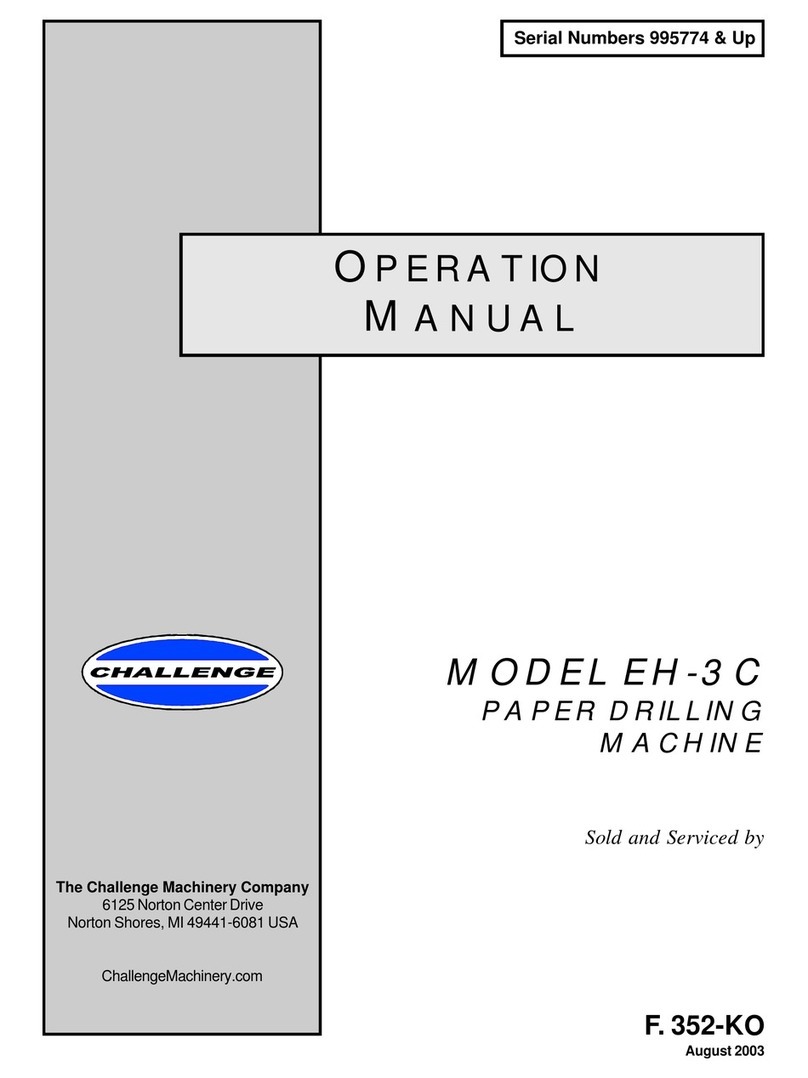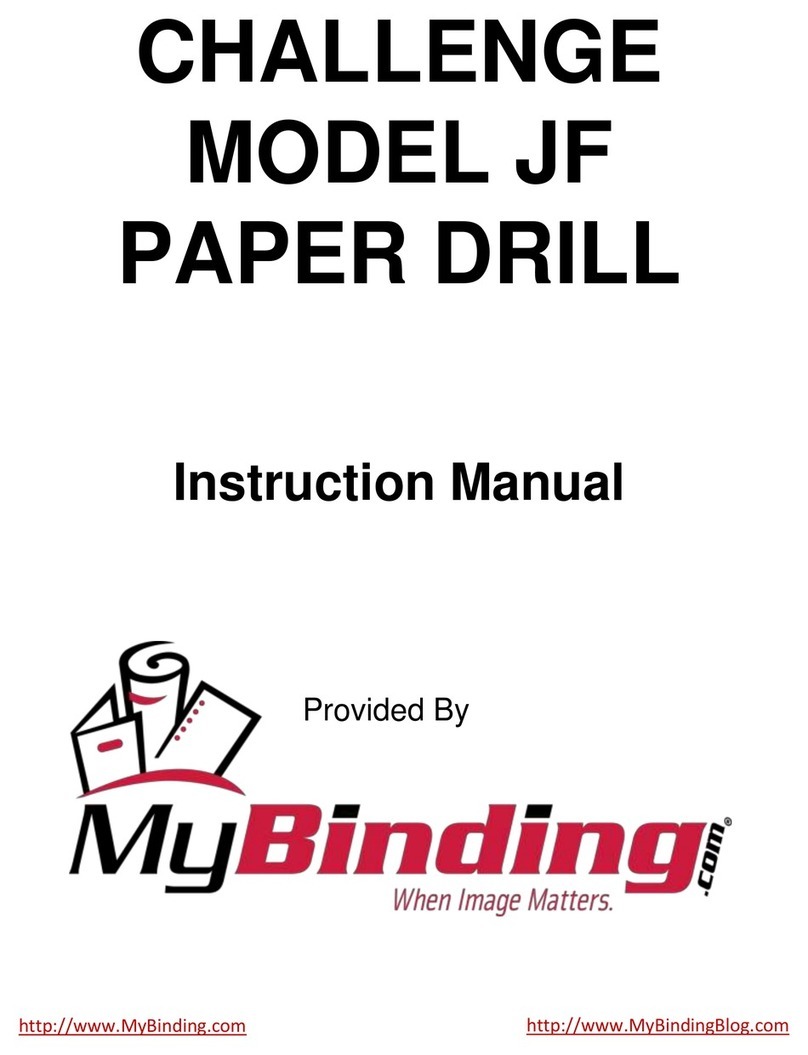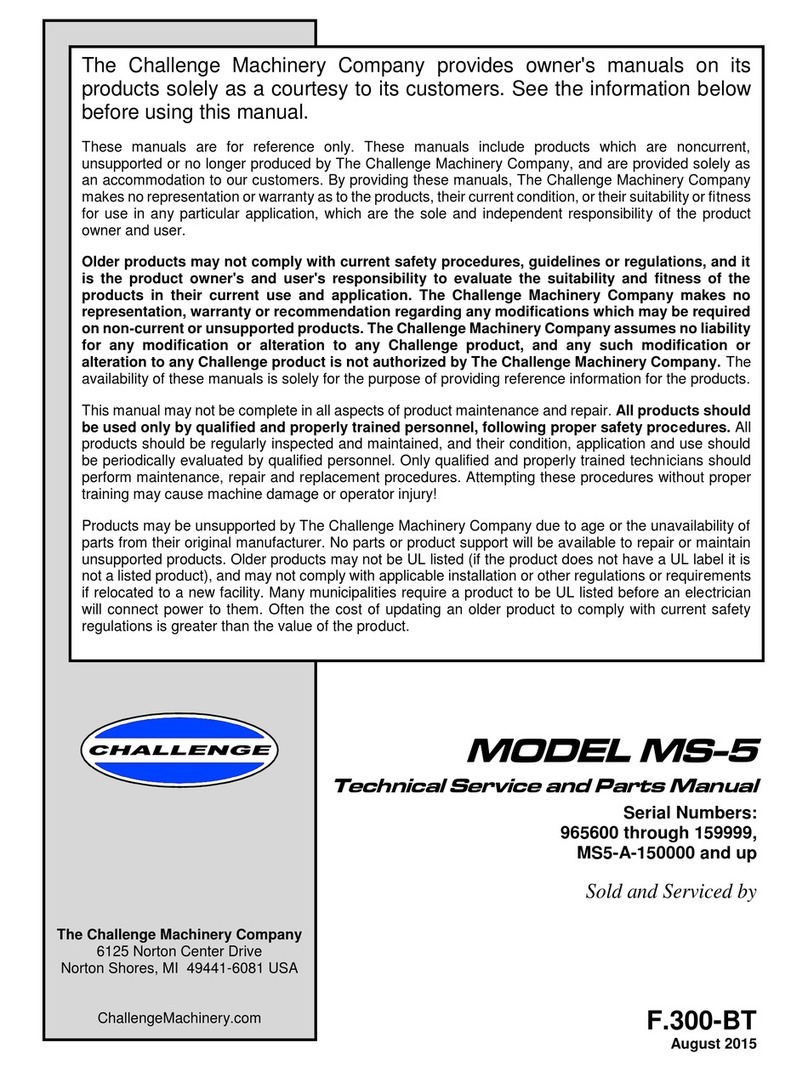
7
F.300-B/MS-5 DRILL/JULY 2000
INSTALLATION
Unpacking
Unless otherwise specified, this machine is packaged
completely assembled. The drill head(s) specified on
the order are shipped already installed. The machine
should be unpacked carefully by removing the pack-
aging materials without damaging any of the machine
parts.
Immediately after uncrating, check off parts received
against the packing list. Also, examine for any physi-
cal signs of damage incurred during shipment. The
machine is inspected before and after crating at our
plant. The responsibility for filing a claim against the
carrierfor damages incurredduring shipment rests with
the receiver of the goods (FOB our factory).
The machine is held in place on its shipping skid with
plastic strapping material. The machine weighs ap-
proximately 850 lbs. (380 kg.), so be sure you have
sufficientequipment and manpowerto handle the ma-
chinesafely. Contact yourAuthorizedChallenge Dealer
to arrange for installation.
Remove the protective coating of light oil from the
machined surfaces with a cleaning solvent, such as
typewash. Cleanallothersurfaceswithasolventsuch
as C.R.C.
Power Hookup
The machine is factory wired to the customer’s speci-
fication. It is the customer’s responsibility to wire the
motorforthecurrent and voltage specifiedonthename
plate. It is important that the line voltage specified be
maintained. Failureto do so willresult in improper op-
eration of the machine (see trouble shooting section
forspecific problems). It may benecessary to provide
a dedicated line for the machine.
Thestandardmotor forthismachineisa208/230 single
phase. This machine should be on a 30 amp circuit
and wired with #10 gauge wire. Optional three phase
motorsareavailablealso;230/208 three phase, 20 amp
circuit,#12GA. wire; and 460 voltthree phase, 15 amp
circuit, with #14 GA. wire.
Remove the lower front cover. Remove the knockout
plugon the right side ofthe machine. Route the power
cord through the knockout hole and secure using a
conduit connector. Connect wire leads to terminals as
shown in fig 2 (single phase use L1 and L2 only). Con-
nect the ground lead to the power panel as shown.
Replace the front cover.
Onthree phase machines, check to see that the motor
turns in the proper direction. Briefly turn the machine
on and off then look at the belt. If it turns in the oppo-
site direction of the arrow on top of the motor, discon-
nect power to the machine and switch the connection
of any one wire with another. Check the rotation of the
motor again to be sure it turns in the proper direction.
SETUP INSTRUCTIONS
Starting the Machine
The power for this machine is supplied by two motors;
one is for the hydraulic power pack and the other is for
the spindle. The hydraulic motor drives the pump di-
rectly while the spindle motor drives the drill heads.
Thetwomotorsare started andstoppedsimultaneously
by “on” and “off” push-buttons located on the control
panel (the main disconnect switch must be in the “on”
position, see fig. 3). The on button has a collar guard
toreduce the possibility ofaccidental contact. Be sure
both motors are operating before trying to drill paper.
WARNING: DISCONNECT POWER be-
forecleaning,lubricating, servicing, or
making adjustments not requiring
power. Lock the disconnect switch in the OFF
position (see Power Lockout Procedure,pg. 4).
NOTE: All guards and instruction plates are in-
stalled for your safety and information and must
remain on the machine as shipped from the fac-
tory.
Ground
Power Panel
Fuse
(fig. 2)

